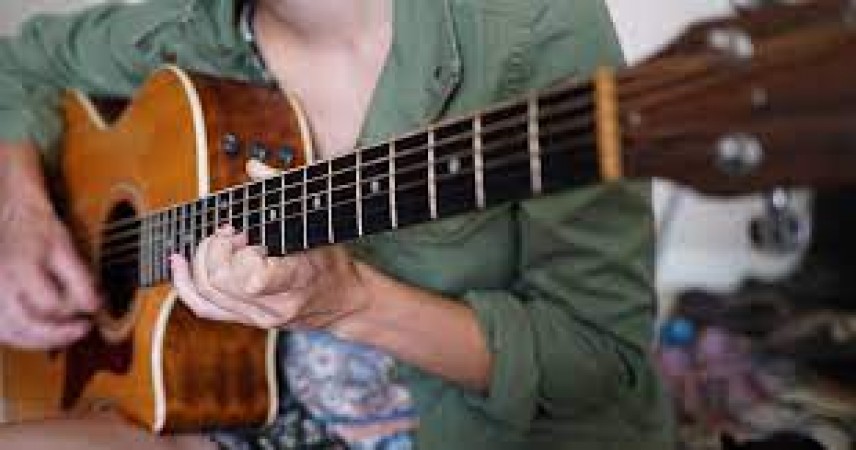
Expressing thoughts and emotions through music and art is a powerful way to connect with others on a deep and meaningful level. Whether you are a seasoned artist or a budding musician, honing the ability to convey your innermost feelings can be a transformative and rewarding experience. In this article, we will explore essential tips and techniques to help you express your thoughts in true music and art, touching the hearts of your audience and leaving a lasting impact.
1. Find Your Authentic Voice
Embracing Individuality
To create true music and art, it is crucial to find your authentic voice. Embrace your uniqueness and personal experiences, as they shape the essence of your creations. Don't be afraid to express your thoughts and emotions boldly, even if they challenge societal norms or expectations.
Reflecting Your Emotions
Harnessing the Power of Emotion
Allow your emotions to guide you in the creative process. Use your art as a canvas to convey the spectrum of human emotions, from joy and love to pain and sorrow. Embrace vulnerability, for it is often the rawest emotions that resonate most deeply with others.
Translating Emotions into Music
If you are a musician, experiment with different melodies, rhythms, and harmonies that mirror your feelings. Let the music become the language through which you communicate with your audience.
Art as a Medium of Expression
Visual Art as an Emotional Outlet
For visual artists, each stroke of the brush or pencil can be an emotional release. Let your artwork capture the nuances of your thoughts, transporting viewers into your world of emotions and ideas.
The Power of Symbolism
Incorporate symbolism in your artwork to convey complex thoughts and concepts that may be difficult to express through words alone. Symbols have a way of speaking to the soul, transcending language barriers.
Embrace Diversity of Perspectives
Drawing from Varied Experiences
To create rich and profound art, expose yourself to diverse perspectives and experiences. Travel, read literature, engage in conversations with people from different cultures and backgrounds. This exposure will broaden your horizons, infusing your art with a unique tapestry of ideas.
Blending Cultural Influences
The Fusion of Music Styles
If you are a musician, explore various music genres and blend them to create a unique sound. The fusion of cultural musical elements can produce a powerful and captivating composition.
Cultural Artistic Styles
For visual artists, incorporate techniques and styles from different cultures into your art. This fusion can create mesmerizing and thought-provoking pieces that captivate viewers.
Artistic Collaborations
Learning from Other Artists
Collaborate with fellow artists and musicians to exchange ideas and learn from one another. Such partnerships can lead to innovative and inspiring creations that push the boundaries of art.
Cross-Disciplinary Collaboration
Step outside your comfort zone and collaborate with artists from different disciplines. A musician working with a visual artist or a dancer can yield fascinating results.
3. Tapping into Nature and Spirituality
Connecting with the Universe
Nature and spirituality have long been sources of inspiration for artists and musicians throughout history. Embrace the beauty of the natural world and tap into the realm of spirituality to enhance the depth and meaning of your art.
Nature's Rhythms and Melodies
Music Inspired by Nature
Draw inspiration from the sounds of nature—rustling leaves, chirping birds, crashing waves—and incorporate them into your musical compositions.
Nature's Canvas
For visual artists, let nature's ever-changing landscapes and vibrant colors inspire your artwork. Capture the essence of natural beauty on your canvas.
Spirituality as a Creative Force
Meditative Practices
Engage in meditative practices to quiet the mind and connect with your inner self. This state of mindfulness can unlock profound creativity and insight.
Symbolism of Spirituality
Explore spiritual symbols and themes in your art and music. Symbols such as mandalas, sacred geometry, and religious motifs can add depth and significance to your work.
4. Evoking Empathy and Unity
Art and Music as a Bridge
Art and music have the power to transcend boundaries and unite people from all walks of life. Utilize your creative expressions to evoke empathy and foster a sense of unity among your audience.
Addressing Social Issues
Art with a Message
Create art that addresses pressing social issues, such as inequality, climate change, or mental health. Your work can become a catalyst for change and inspire others to take action.
Music for Social Awareness
Write songs that convey powerful messages about social justice, compassion, and hope. Music can become an anthem for causes that resonate with people worldwide.
Embracing Empathy in Art
Eliciting Emotional Responses
Design your artwork to evoke emotional responses from viewers. When people empathize with your art, it becomes a shared experience that transcends differences.
Building Bridges through Music
Music can break down barriers and create bonds between people of different cultures and backgrounds. Use your music to celebrate diversity and promote understanding. Expressing your thoughts in true music and art is an extraordinary journey of self-discovery and connection with others. Embrace your individuality, draw from diverse perspectives, tap into nature and spirituality, and evoke empathy and unity through your creations. Let your art and music be a reflection of your soul, inspiring others and leaving a lasting impact on the world.
Govt Action Looms for Twitter after Viral Video of Manipur Women Paraded Naked
Manipur Unrest: CM Urges Thorough Probe into Viral Video's Authenticity
Sonia Gandhi Urges PM Modi for Manipur Discussion in Parliament